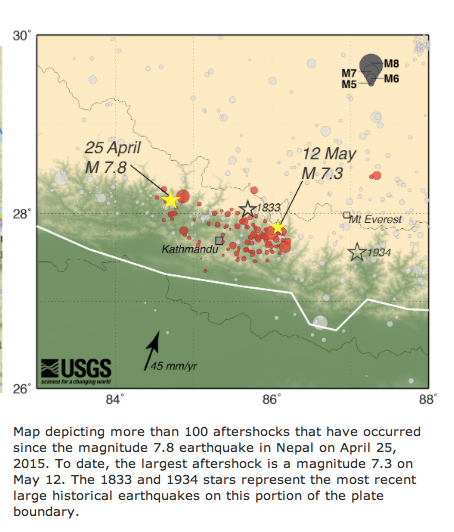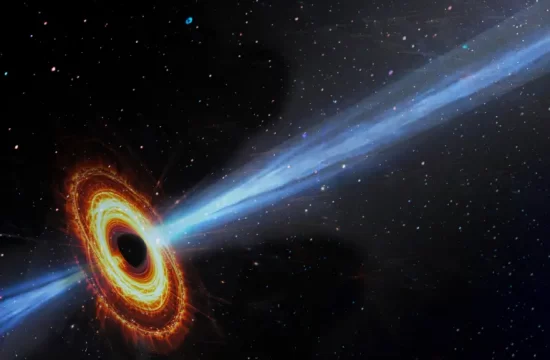KATYAYANI CHOWDHRY | Author/ Freelance Writer
 We live in a continuum of terror- unleashed by the forces of nature, as tremors shake and stir our lives unrelentlessly.
We live in a continuum of terror- unleashed by the forces of nature, as tremors shake and stir our lives unrelentlessly.But there is a bigger perspective to all that’s going on now, has been going on, and the future.
About 250 million years ago, all land masses of today were congealed into a supercontinent- Pangea, which started defragmenting and floated apart.
Continents ride on tectonic plates, and do the locomotion in slide/collide/recede movements at an average speed of 1-20 cms/year, driven by the extreme heat and pressure arising from the earth’s core via the convection mechanism.
There are seven major tectonic plates acknowledged today, along with several smaller ones.
About fifty million years back, the Indian landmass, with its edges as collision points, smashed into the Eurasian continent, closing in on the Tethys Sea that separated them. The sea eventually sunk into the mantle (the layer beneath the crust).
As the Indian plate rammed violently into Eurasia, part of it foundered and slid beneath the Tibetan Plateau.
The sinking sea floor thrust up in the collision process as the crumpled, jagged folds of the super mountains we know as the Himalayas.
Even today, the continental-continental convergence continues, and is expected to do so for the next 5-10 million years, jacking up the Himalayas by almost 2 cm per annum, as India slips underneath them by 2 meters per century- good enough to create quakes of M7 and more, as well as new fold mountains.
Making this territory- the most seismically active zone, ever.
These natural mega building processes have never occurred hazard free.
Our crust is the thinnest layer of the earth, built of mineral silicates that are rocky, brittle and cold. Hence it fractures and ruptures easily, when there are major slips on a fault or a crack in the crust resulting from displacement.
Tectonic plates on the move get stuck on their edges due to friction between the opposing plates. When the tension due to friction maximizes, the strain built up releases as energy waves or temblors from the hypocenter (the focal point of the earthquake underneath the crust), piercing through the surface violently, if shallow enough- that is under 30 kms. approximately.
Tremors also succeed the main quake as aftershocks generally in the main area, but decrease in intensity and frequency over time.
Lets fact –check the happenings of the past fortnight with the experts in the field.

EXPERTSPEAK
Professor Walter D. Mooney, Seismologist, US Geological Survey (USGS) NASA
1/ How long do you think the earthquake was building up before it actually struck the surface? Please explain the dynamics of such an impactful tremor.
The Nepal earthquake occurred because the Indian continent is being pushed beneath the rocks of Nepal at a depth of about 10 km below Kathmandu. This geological process has created the towering Himalayan Mountains, but the process also causes numerous deadly earthquakes.
Kathmandu was rocked by an equally strong earthquake in 1934, as will be remembered by senior citizens in the city.
2/ In simple terms, how much energy equivalent has been released? Does it have any implications?
The energy released by this earthquake was enormous. The energy was larger than a huge typhoon (such as struck Bangladesh in the past). The energy released in one brief minute was more than the entire amount of energy used by everyone in Nepal during an entire year. In other words, you could provide bright lights to every person in Nepal for more than one entire year.
3/ Are there any more expected of the same magnitude in this country or nearby? If so, when, in how many years?
The most likely location for a future large earthquake in Nepal is western Nepal, that is, the region to the west of the April 25, 2015 earthquake. Eastern Nepal already had a large earthquake in 1934, and another earthquake is less likely there.
The history of past earthquakes in Nepal is not well known before 1800. That is why scientists cannot say how long the stress accumulated before the 2015 earthquake. We can only say that the earthquake stress built up for at least 215 years.
Another moderate or large earthquake could strike Nepal at any time, particularly in the western half of the country where no large earthquake has occurred since 1800. The stress in the Earth has built up in that region of Nepal.
Earthquakes occur all along the Himalayan Mountains, not only in Nepal. So the next earthquake could occur farther west in the Indian Himalayas or to the east in Bhutan.
4/ Was the May 12th an earthquake or an aftershock of the one on 25th April? Was such a magnitude expected?
The M7.3 earthquake of May 12, 2015 was an aftershock of the April 25, 2015 M7.8 earthquake. The reason is that the May 12 earthquake fell within the active fault zone that moved on April 25, 2015, thus is clearly falls within the definition of an aftershock.
The M7.3 occurred near the eastern end of the fault surface that suddenly moved on April 25, 2015. This particular location is understandable from a scientific perspective because the location is at the eastern edge of the fault. You can say that the fault crack moved farther east during the M7.3 earthquake of May 12.
5/ Does this lengthen the hazard of aftershocks? Do we expect more?
Numerous felt aftershocks can be expected during the coming days. A M7.3 earthquake is a large earthquake, and this earthquake will have a lot of aftershocks that local people will feel. Typically these aftershocks will have a magnitude lower than about M6.5 (M = magnitude). There is absolutely no reason for panic, but normal precautions to avoid dangerous building are needed.
May 12, 2015 M7.3 Nepal earthquake was an unexpected earthquake in terms of being uncommonly large in view of the M7.8 April 25, 2015 main earthquake.
The occurrence of the May 12, 2015 M7.3 aftershock reminds us that there is always a high seismic risk in Nepal. Most probably the earthquake aftershocks will slowly die down, but there is always a small possibility of another strong earthquake. This is because Nepal lies in a very active seismic zone.
At present, earthquake aftershocks are occurring in a large zone that extends 150 km east of the April 25th, 2015 epicenter. This large area surrounding Kathmandu will continue to have felt aftershocks for several days and up to weeks.
Despite years are hard work, earthquake scientists cannot predict the time, place and magnitude of the next earthquake in Nepal.
We know that another deadly earthquake could occur in Nepal at any time.
Earthquakes present a silent danger, as we learned on April 25, 2015. They strike without a warning.
DISASTER PREVENTION & MANAGEMENT

Kazuki Koketsu, Professor of Seismology, Earthquake Research Institute, University of Tokyo
1/What changes have been expected to be caused both inside and above the earth’s crust?
The crust and its surface have been deformed significantly in and around the source region of the earthquake.
2/ What disaster prevention/preparedness measures can be taken specifically in the case of Nepal?
In Nepal, it is the most important to reinforce existing old houses and buildings.
3/ Are there any more expected of the same magnitude in this country or nearby? If so, when, in how many years?
I think yes. A French geophysicist said, “There is still likely to be more strain stored, and we should probably expect another big earthquake to the west and south of this one in the coming decades.”
Professor Walter D. Mooney, Seismologist, US Geological Survey (USGS) NASA
“We know how to use good earthquake engineering to prevent the loss of life. With community awareness and education, the right steps can be taken to reduce the loss of life in a future large earthquake in Nepal.
This will require building better, safer structures, and replacing the weakest, most dangerous structures.
The only safe response to the ever-present earthquake hazard in Nepal is to build much stronger buildings. It is evident to everyone that building collapse and large landslides were the main cause of death and destruction.
Avoiding a future disaster will require teamwork between earthquake engineers, government authorities, and the public.
The international scientific and engineering community, including the US Government and its partners, stands ready to provide Nepal with the technical assistance that is needed to avoid a future earthquake disaster.”
Let’s hope the aftershocks cease altogether soon enough, so that the rehabilitation process can finally begin.
Till then, stay safe!
(Follow at KATYAYANI CHOWDHRY, She is an author/ freelance writer. Her debut trilogy SHUNYATA is now available on AMAZON KDP. She can be reached at katyayanichowdhry@gmail.com)









